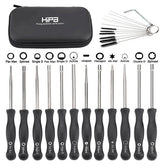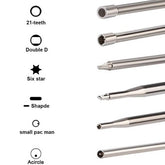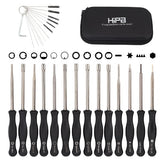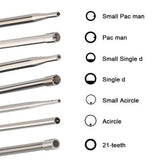Why Is the Flywheel on a Riding Mower Hard to Spin by Hand? Causes and Solutions
The flywheel in a riding mower is critical for engine balance and ignition, but manual rotation can feel stubbornly difficult. While this resistance is often tied to the flywheel itself, connected systems like the PTO clutch can also contribute. Below, we explore all potential causes.
Key Reasons a Riding Mower Flywheel Resists Manual Spinning
1. Magnetic Drag from the Ignition Coil
The flywheel’s magnets interact with the ignition coil to generate a spark. If the coil is too close, magnetic attraction creates resistance.

Solution:
Adjust the coil air gap to factory specs (typically 0.010–0.014 inches).
2. Bent Crankshaft.
If the lawn mower blade hit the rock hardly and bend the crankshaft. the flywheel may wobble excessively as it spins. This wobble can cause the flywheel to rub against the ignition coil or other nearby components, increasing resistance. You can quick check whether the sheared key misaligns the flywheel to know whether your lawn mower blade ever hit a hard subject and bend the crankshaft.

Solution:
Replace the key and the crankshaft.
3. PTO Clutch Drag or Failure
A PTO clutch (Power Take-Off clutch) is a critical mechanical component used in machinery, lawn mower for example, to engage or disengage power transmission from an engine to auxiliary attachments. It enables versatile machinery operation while protecting engines from overload.
The PTO clutch engages/disengages the mower blades. If faulty, it can create resistance even when "off":

Worn Clutch Discs: Friction material may stick, transferring load to the flywheel.
Stuck or Misadjusted Cable: A slack cable prevents full disengagement.
Electrical Issues (for electric PTO clutches): A failing clutch solenoid or wiring problem can leave the clutch partially engaged.
Solution:
Inspect the Clutch: Check for worn discs, debris, or rust. Clean or replace components.
Adjust the Cable: Ensure the PTO lever fully disengages the clutch. Tighten or replace a loose cable.
Test Electrical Connections: For electric clutches, verify voltage to the clutch and inspect wiring for damage.
4. Friction in Bearings or Bushings
Dry or worn bearings in the crankshaft or engine block add drag.

Solution:
Lubricate or replace bearings.
5. Corrosion or Rust
If the pulley is rusted to the crankshaft, it may stick or bind, increasing rotational resistance.
This can make the flywheel harder to turn by hand (especially if the blade is attached, as it adds load).
Solution: Remove the pulley, clean the rust with a wire brush or penetrating oil (like WD-40),
6. Connected Engine Issues
Hydraulic lock (fluid in the cylinder) or stuck valves can prevent rotation.

Solution:
Remove the spark plug to check for fluid blockage.
7. Blade Engagement
If the PTO clutch is accidentally engaged, the blades add resistance.
Solution:
Ensure the PTO lever/switch is fully disengaged.Safety Precautions
Disconnect the spark plug wire before troubleshooting.
For electric PTO clutches, disconnect the battery to avoid shocks.
When to Call a Professional
If the PTO clutch requires replacement or internal engine damage is suspected (e.g., bent crankshaft), consult a small-engine technician.
Conclusion
A stiff flywheel on a riding mower can stem from multiple sources—including the PTO clutch, ignition coil gap, or engine issues. Addressing the PTO clutch (adjusting the cable, cleaning debris, or testing electrical components) often resolves hidden resistance. Pair this with routine maintenance, like lubricating bearings and checking the flywheel key, to keep your mower running smoothly.
Pro Tip: Always disengage the PTO clutch and let the engine idle for 30 seconds before shutting it off. This reduces stress on the flywheel and clutch!























1 comment
Also rust build up on the engine pulley will cause “belt drag” that will cause the engine to be difficult to rotate by hand / solution/ remove rust from pulley groves with a wire brush